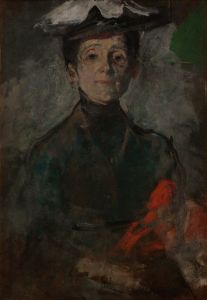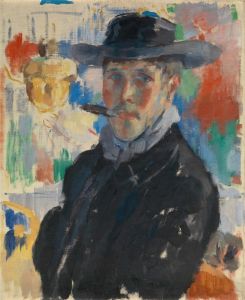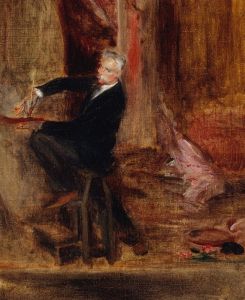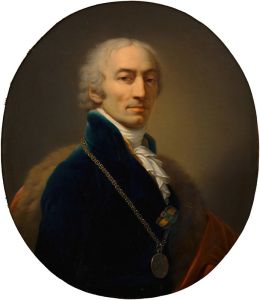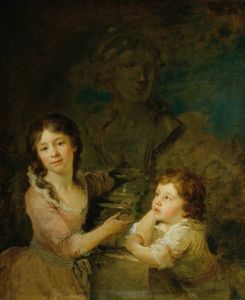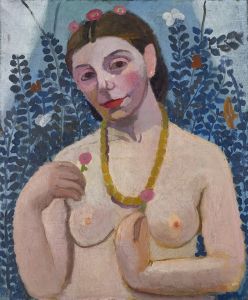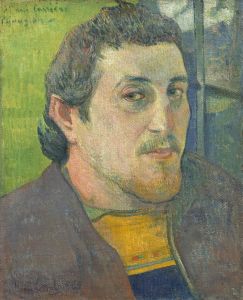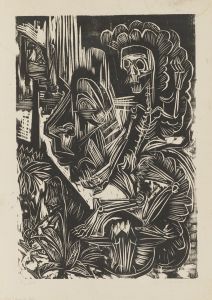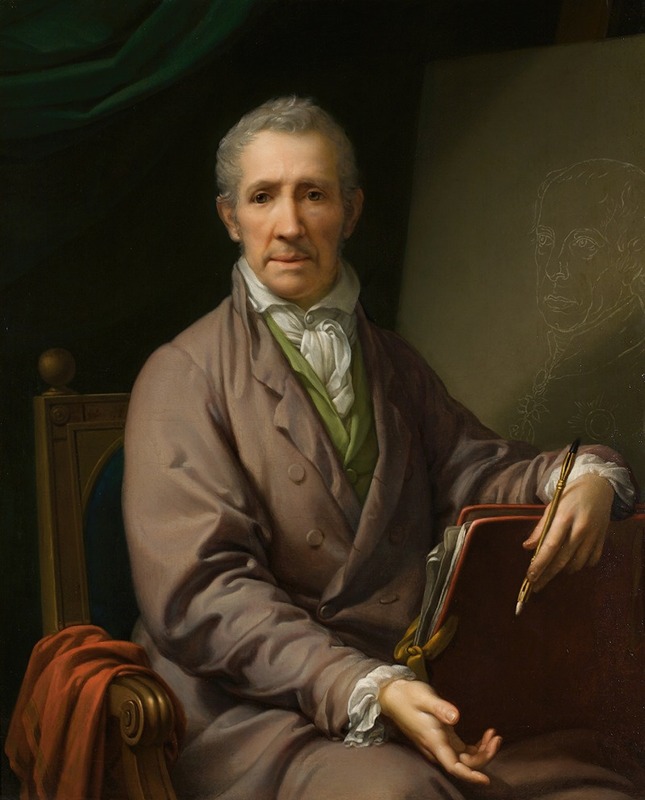
Selbstbildnis an der Staffelei
A hand-painted replica of Johann Baptist von Lampi the Elder’s masterpiece Selbstbildnis an der Staffelei, meticulously crafted by professional artists to capture the true essence of the original. Each piece is created with museum-quality canvas and rare mineral pigments, carefully painted by experienced artists with delicate brushstrokes and rich, layered colors to perfectly recreate the texture of the original artwork. Unlike machine-printed reproductions, this hand-painted version brings the painting to life, infused with the artist’s emotions and skill in every stroke. Whether for personal collection or home decoration, it instantly elevates the artistic atmosphere of any space.
Johann Baptist von Lampi the Elder was an accomplished Austrian portrait painter known for his works during the late 18th and early 19th centuries. One of his notable works is "Selbstbildnis an der Staffelei," which translates to "Self-Portrait at the Easel." This painting is a self-portrait, a genre that allows artists to explore their own identity and presence within their work.
Lampi was born in 1751 in Romeno, a small town in the Tyrol region, which was then part of the Habsburg Monarchy. He began his artistic education in Salzburg and later continued his studies at the Academy of Fine Arts in Vienna. His career flourished as he became a sought-after portraitist, known for his ability to capture the likeness and character of his subjects with precision and elegance.
"Selbstbildnis an der Staffelei" is a reflection of Lampi's skill and his standing as an artist. The painting depicts Lampi seated at his easel, engaged in the act of painting. This composition not only showcases his technical abilities but also offers insight into his self-perception as an artist. The self-portrait is a testament to his confidence and his dedication to his craft.
In this work, Lampi presents himself in a dignified manner, dressed in the attire typical of an artist of his time. The background is often kept simple, drawing attention to the artist and his tools. The easel and canvas are prominently featured, emphasizing the act of creation. This focus on the artist at work is a common theme in self-portraits, highlighting the intimate relationship between the artist and their art.
Lampi's style is characterized by a refined use of color and light, which he employs to create a sense of depth and realism. His portraits are noted for their lifelike quality and the subtlety with which he captures the nuances of expression and personality. In "Selbstbildnis an der Staffelei," these qualities are evident in the careful rendering of his features and the thoughtful composition of the scene.
Throughout his career, Lampi received numerous commissions from European nobility and was appointed as a court painter. His reputation extended beyond Austria, and he worked in various European cities, including Warsaw and St. Petersburg. His ability to adapt his style to suit the preferences of his patrons contributed to his success and longevity as an artist.
"Selbstbildnis an der Staffelei" is more than just a self-portrait; it is a reflection of Lampi's identity as a painter and his place within the artistic community of his time. The painting serves as a personal statement, capturing the essence of an artist who was deeply committed to his work and who played a significant role in the portraiture of his era.
Today, Johann Baptist von Lampi the Elder is remembered as a master of portraiture, and his self-portrait remains an important piece that offers insight into the life and work of this distinguished artist. His legacy continues through his contributions to the art world and the influence he had on subsequent generations of portrait painters.





